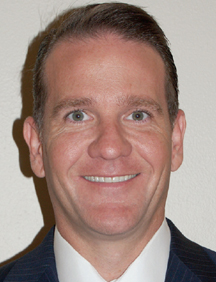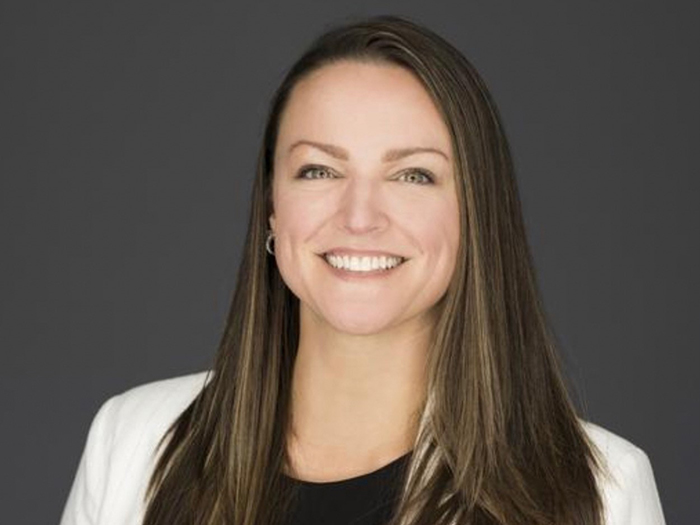2015 Power Broker
Marine
Understanding the Risks
If it ain’t broke, don’t fix it. That was the clear message from a client to Richard Geiger when the firm reorganized itself and split off a large chunk of its business.
“We recently completed a spin-off where we needed to duplicate our marine liability structure at an aggressive price,” said the risk manager.
“Rick successfully completed that assignment, getting us the same coverage for the new entity with a cost structure we liked. I was confident he would be able to get it done. Rick was able to negotiate a very aggressive pricing structure at below minimum premiums with the same coverage for some of the layers.”
Another client had a workers’ compensation policy that included limited cover for the Jones Act and U.S. Longshore and Harborworkers’ Compensation Act.
The Jones Act is a federal law that requires the movement of cargo between U.S. ports be carried in vessels owned by and crewed by U.S. citizens. USLH is workers’ compensation for employees specifically when working on or near navigable waters and engaged in maritime employment.
The additional elements of the coverage were expensive, despite a million-dollar retention.
The client said Geiger was able to isolate those specific exposures and place a policy that effectively eliminated the retention and significantly reduced the costs.
Geiger worked with colleagues and insurers in London to create a financial guaranty cover to protect the client’s balance sheet in case of a significant loss after project completion.
Making It Happen
Often, Power Brokers earn their status through innovative coverage and placements, or by resolving a complex claim.
Mira Jacinto had to do it all at once for a client that had suffered “multiple large catastrophic claims,” said the risk manager.
A previous reorganization of the company’s business plan, combined with the losses, drove the firm into poor results and forced it to sell a significant portion of its operations.
The risk manager said that Jacinto was instrumental in getting things back on track. She revised the company’s program after the divestiture, supported management in crafting a risk program for its new, smaller operations, and went to domestic and international markets to secure placement.
Jacinto transformed the client’s turnaround story from a negative one to a positive one, and was able to place customized coverage and secure an overall reduction in rate.
For another client, the challenge could not have been more different.
The firm had prospered, and it asked Jacinto to recommend and implement opportunistic expansions in coverage.
At a time when many companies are emphasizing supply-chain efficiency and trying to reduce inventory, Jacinto found readily available capacity in the market for excess stock exposure, enhancing the client’s marine program at very low cost.
For a third client, a very large retail operation with an evolving business model, Jacinto was credited with keeping the inventory program current with rapid changes in the company.
Meeting the Challenge
“Our cargo coverage was a mess,” said one risk executive. “Our whole business practice had changed and suddenly we went from holding no inventory to holding a lot. It was suddenly a huge exposure both in warehouses and out in the supply chain.
“We had changed our whole stock-throughput policy, and our coverage had not kept pace. We were paying way too much.”
The exec’s company put out an RFP and ultimately chose Michael Pellegrini. “He fixed the gaps and saved us money.”
Part of the challenge, the client said, was that that the company is known for its lean supply chain. Presenting the company to the market was as much a question of perception as it was underwriting and risk management.
Nevertheless, Pellegrini was able to double limits to $200 million, and enhance coverage across the board for the transit and inventory risks, all while securing a rate reduction of more than one-quarter of the previous bill.
Having secured increasingly favorable successive multiyear cargo and transit placements for one client, Pellegrini had to dig a little deeper in 2014 to find efficiencies to be gained in the client’s excess layers that were placed offshore.
Pellegrini was able to craft a presentation that generated competition by previously reluctant domestic underwriters. The result was significant reductions by the incumbent London markets.
Expertise for Diverse Needs
Times have been tough for some in the marine sector, but companies were able to rely on the expertise of Kevin Sisk.
“This was a terrible year for our industry, and a tough one for our company,” said the owner of a private firm. “Margins sunk very low, to the bare bones.
“We put a lot of pressure on Kevin, and he really helped us when we needed it. We changed the whole nature of our company, sold off some big operations, and concentrated on a few others. Our whole financial structure changed and our whole risk profile changed.
“We had to go back to our underwriters — sometimes for our whole placement, sometimes just for segments. But Kevin really earned his stripes this year; we got seamless changes in coverage,” the owner said.
In a strikingly different testimonial, another client faced other needs at a fast growing firm with many small clients. The owner said that with expansion had come strong pressure from small clients for the company to handle the risk management and insurance for projects.
The Catch-22 was that if Sisk’s client refused to shoulder the burden, it risked losing the project or customer entirely; if Sisk’s client accepted, the risks exposures could be greater than any gain from the project.
The client credited Sisk with being able to accommodate the risks — in some cases within the firm’s existing program. In other cases, he worked with the client and its customer to craft coverage for the project that enabled it to proceed without unduly burdening the contractor.
Creative Solutions to Keep Clients Afloat
HUB International’s B.C. Thibeaux III earned his laurels this year by crafting powerful and innovative programs for small operators in a beleaguered industry.
“B.C.’s aggressive and creative thinking showed me how to limit my company’s and my customers’ exposure, by getting non-owned vessel owners to list us on their policy as additional insured,” said one owner. “And then he was the architect in implementing that policy.”
The client has been an owner and operator of offshore vessels for more than 30 years, along with marketing and managing a large fleet of non-owned vessels. So it was no mean feat to show him an approach he had not heard about before.
In another case, a client needed traction with underwriters before he could even begin to think about creative options.
“When I met B.C., my company was having a very difficult time getting underwritten,” said the company executive.
“Many brokers didn’t even acknowledge us with a return phone call. Although we are a small account, B.C. treated us like a major [one], aggressively attacked the market and got us coverage, which effectively saved us from tying up the fleet. B.C. kept us in business.”
Another client had multiple claims on both employer’s and general liability, which were separate. First, Thibeaux worked with the client on safety and risk mitigation, and then was able to find a Lloyd’s underwriter willing to take the placements under a single policy.















